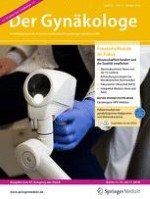Erschienen in:

06.09.2018 | Hypertensive Schwangerschaftserkrankungen | Leitthema
Monitoring bei Präeklampsie und kardiovaskulären Erkrankungen in der Schwangerschaft
verfasst von:
PD Dr. Tanja Groten
Erschienen in:
Die Gynäkologie
|
Ausgabe 10/2018
Einloggen, um Zugang zu erhalten
Zusammenfassung
Die Schwangerschaft stellt für Frauen mit kardiovaskulären Vorerkrankungen und Frauen, die in der Schwangerschaft eine schwere Präeklampsie entwickeln, eine potenziell lebensbedrohliche Gefährdung dar. Die Entbindung aus mütterlicher Indikation ist oft die einzige Möglichkeit, die Mutter vor bleibenden Schäden zu bewahren. Eine Verlängerung der Schwangerschaft zugunsten des Kindes erfordert in dieser Situation ein engmaschiges Monitoring. Während die maternale Gefährdung bei der Präeklampsie erst in der Schwangerschaft entsteht, ist sie bei Frauen mit vorbestehenden Herzerkrankungen bereits präkonzeptionell bekannt. Diese Frauen sollen deshalb bereits präkonzeptionell einer besonderen Beratung und Betreuung zugeführt werden. Die WHO (World Health Organisation) empfiehlt unterschiedlich intensive Betreuungsregime in Abhängigkeit von der Schwere der Vorerkrankung. Frauen der Risikoklasse IV sollte von einer Schwangerschaft abgeraten werden. Im Rahmen der Präeklampsie sind die Schwangeren insbesondere durch schwere Hochdruckkrisen gefährdet, die zu Hirnblutungen und eklamptischen Anfällen führen können. Eine konsequente Blutdruckeinstellung ist deshalb essenziell.